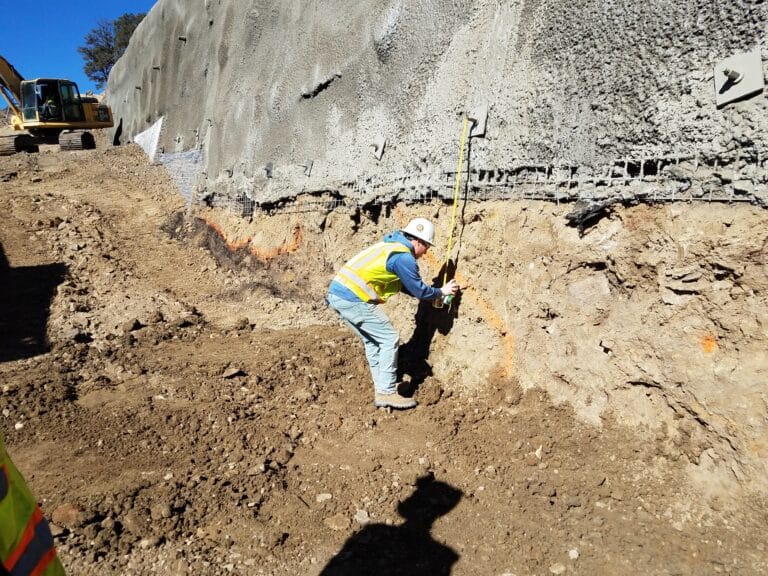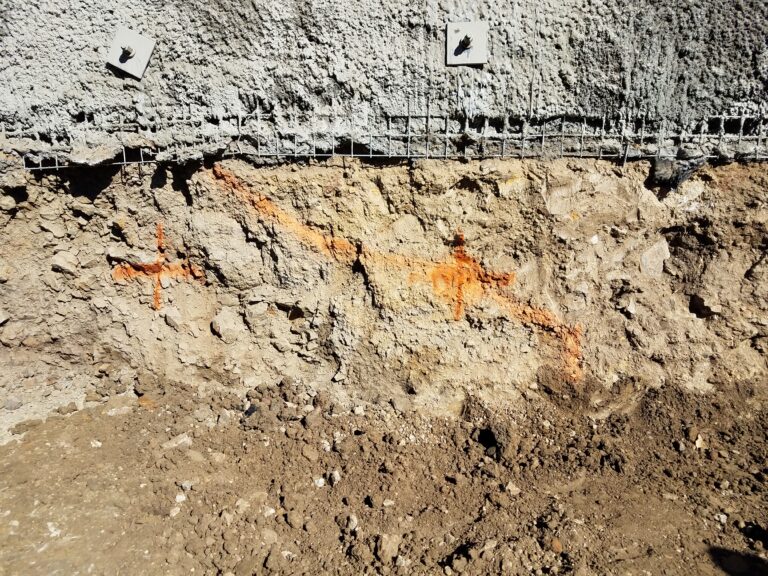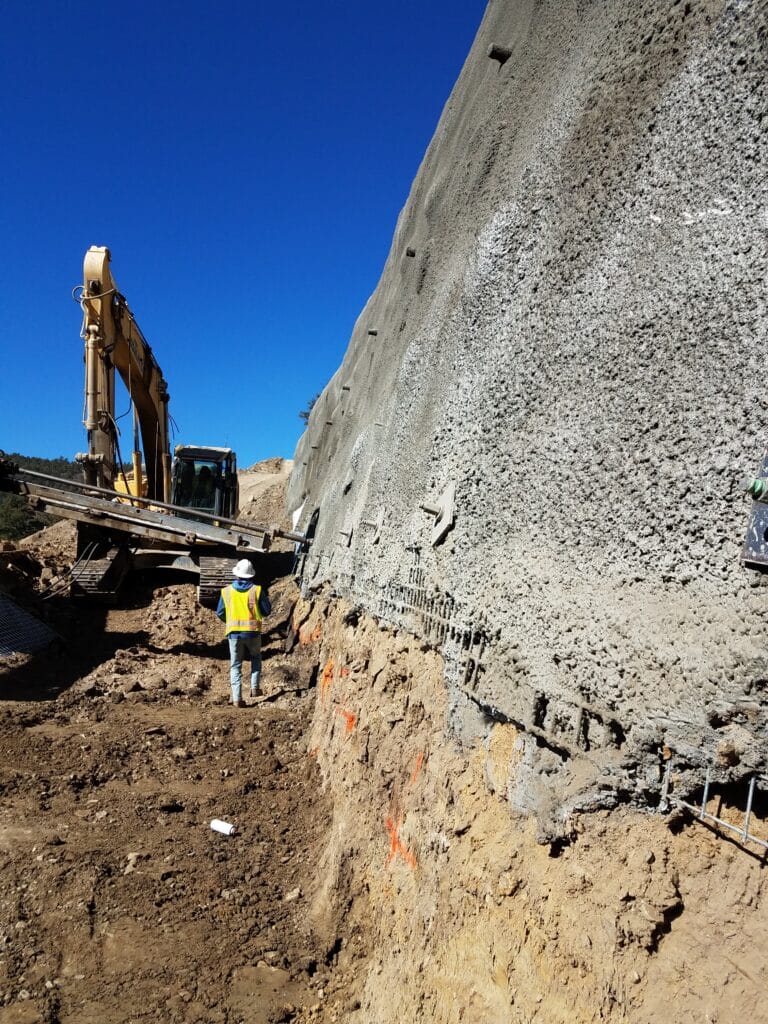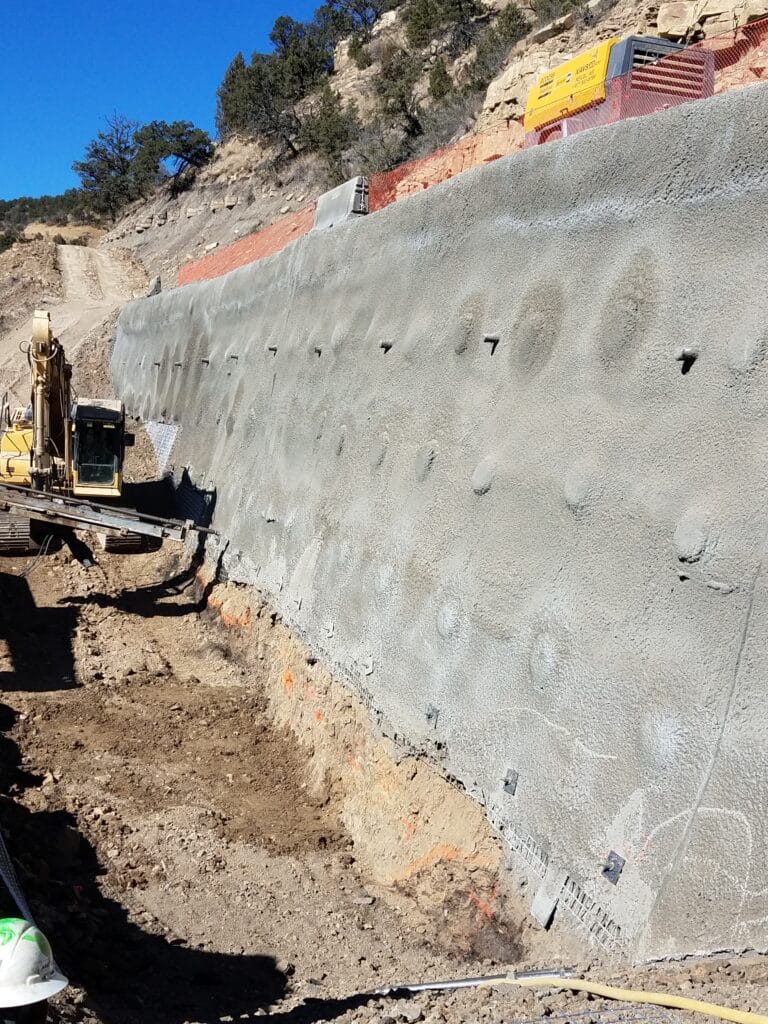Project At-a-Glance
- Remote access landslide mitigation via soil nail wall technology
- Observational approach led to an accelerated design and construction schedule
Located at the base Sangre de Cristo Range near the New Mexico border, Trinidad sits below a significant area of natural gas development in the foothills. During the first six months of 2017 total regional precipitation was about 50% more than average. In August of that year, a 200-ft long landslide disrupted an unpaved access road that hugs the side of a canyon, blocking access to a nearby gas well.
By October, the main scarp below the roadway surface had advanced several feet into the road. Formation of a secondary scarp further undercut the road resulting in a single travel lane and by December, the top of the slide had advanced effectively closing the road. Brierley Associates was retained to investigate and design a slope stabilization system that would allow roadway reconstruction and mitigate subsequent slide events. Due to the relatively rapid movement of the landslide and impacts to the road, Brierley was requested to develop a stabilization scheme on an accelerated schedule.
Although tiebacks are the traditional landslide stabilization technique, Brierley developed a practical remedy based on an observational approach during soil nail wall installation. This method allowed us to adjust the soil nail wall bottom, so it extended below the slide plane. Upon installation of the soil nail wall, the deepened portion was backfilled to protect the base of the stabilized ground mass from future erosion. Although the landslide turned out to be significantly deeper than initially assessed, our observational approach led to a flexible design that allowed for modifications as conditions became apparent, which ultimately avoided construction delays.




